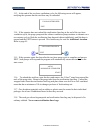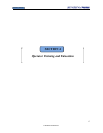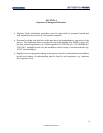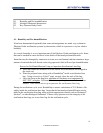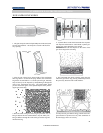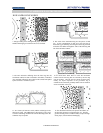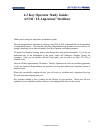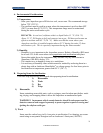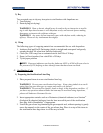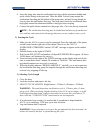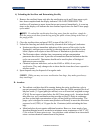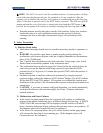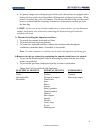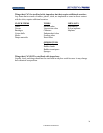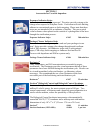
24
OWNER’S MANUAL
3) Dry
Two accepted ways to dry any item prior to sterilization with Anprolene are:
1. Towel drying
2. Drain drying (air drying).
WARNING!: Heat or hot air should never be used to dry an item prior to steriliz-
ing it with Anprolene because it will dehydrate or dry out bacteria spores making
them more resistant to the ethylene oxide gas.
WARNING!: Any water left on items may react with ethylene oxide, reducing its
efficacy. Please air dry instruments thoroughly.
4) Wrap
The following types of wrapping material are recommended for use with Anprolene:
1. Andersen Seal and Peel® Packaging (which is airtight and waterproof and greatly
extends the shelf life when heat sealed at both ends)
2. Cloth (like CSR wrap) has an estimated sterile shelf life of 30 days
3. Paper (self-seal pouches) has a shelf life of 30 days
4. Tyvek-paper pouches
☺HINT: Exposure indicators such as the Andersen AN85 or AN86 will turn color in
the presence of EO, helping to later identify items that have been sterilized.
C. Sterilization Cycle
1) Preparing the Sterilization Liner Bag
1. Place prepared items in a new sterilization liner bag.
WARNING!: Do not reuse sterilization liner bags. Even a tiny pinhole in a sterili-
zation liner bag can allow gas to escape and cause cycle failure!
WARNING!: Do not sterilize liquids, foods or drugs in the Anprolene sterilizer. If
you have any questions about whether an item may be sterilized using Anprolene,
please call Andersen Customer Service.
2. Insert appropriate controls such as a Dosimeter (chemical indicator) or a Steritest
®
(biological & chemical indicator) into the least accessible part of the sterilization
liner bag. Add a Humidichip
®
if appropriate.
3. Unroll the gas release bag containing the gas ampoule and, without opening it, gently
move the ampoule to the center of the gas release bag. Place it on top of the items in
the sterilization liner bag where it will be easy to break.
© Andersen Products Ltd



